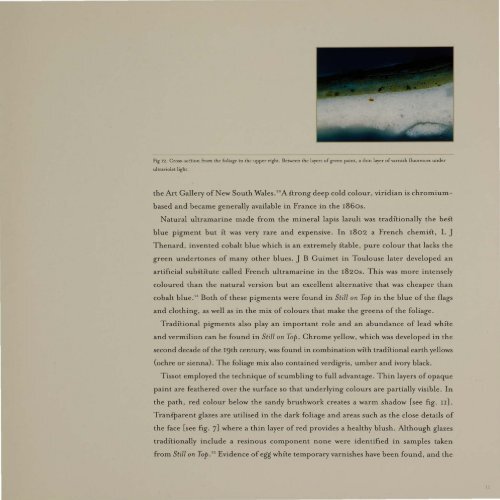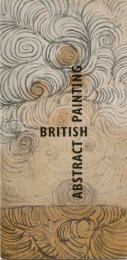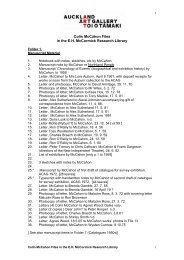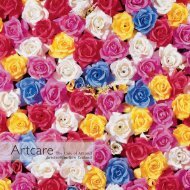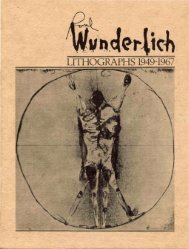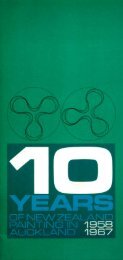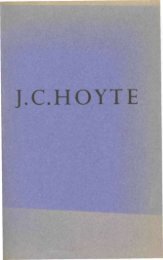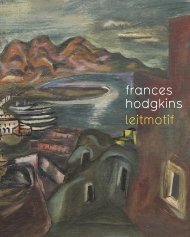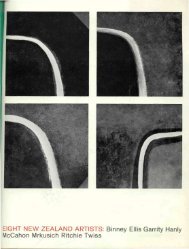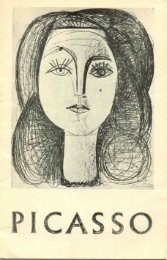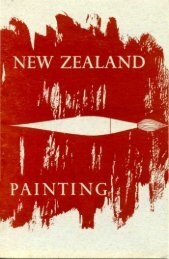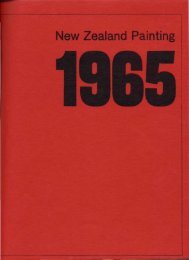Tissot - Still on Top (PDF, 4561.04KB) - Auckland Art Gallery
Tissot - Still on Top (PDF, 4561.04KB) - Auckland Art Gallery
Tissot - Still on Top (PDF, 4561.04KB) - Auckland Art Gallery
You also want an ePaper? Increase the reach of your titles
YUMPU automatically turns print PDFs into web optimized ePapers that Google loves.
Fig 12. Cross-sedi<strong>on</strong> from the foliage in the upper right. Between the layers of green paint, a thin layer of varnish fluoresces under<br />
ultraviolet light.<br />
the <strong>Art</strong> <strong>Gallery</strong> of New South Wales. 20 A str<strong>on</strong>g deep cold colour, vi rid ian is chromium<br />
based and became generally available in France in the 186os.<br />
Natural ultramarine made from the mineral lapis lazuli was traditi<strong>on</strong>ally the best<br />
blue pigment but it was very rare and expensive. In 1802 a French chemist, L J<br />
Thenard, invented cobalt blue which is an extremely stable, pure colour that lacks the<br />
green undert<strong>on</strong>es of many other blues. J B Guimet in Toulouse later developed an<br />
artificial substitute called French ultramarine in the 1820s. This was more intensely<br />
coloured than the natural versi<strong>on</strong> but an excellent alternative that was cheaper than<br />
cobalt blue." Both of these pigments were found in <str<strong>on</strong>g>Still</str<strong>on</strong>g> <strong>on</strong> <strong>Top</strong> in the blue of the flags<br />
and clothing, as well as in the mix of colours that make the greens of the foliage.<br />
Traditi<strong>on</strong>al pigments also play an important role and an abundance of lead while<br />
and vermili<strong>on</strong> can be found in <str<strong>on</strong>g>Still</str<strong>on</strong>g> <strong>on</strong> <strong>Top</strong>. Chrome yellow, which was developed in the<br />
sec<strong>on</strong>d decade of the 19th century, was found in combinati<strong>on</strong> W11h traditi<strong>on</strong>al earth yellows<br />
(ochre or sienna). The foliage mix also c<strong>on</strong>tained verdigris, umber and ivory black.<br />
<str<strong>on</strong>g>Tissot</str<strong>on</strong>g> employed the technique of scumbling to full advantage. Thin layers of opaque<br />
paint are feathered over the surface so that underlying colours are partially visible. In<br />
the path, red colour below the sandy brushwork creates a warm shadow [see fig. II].<br />
Transparent glazes are utilised in the dark foliage and areas such as the close details of<br />
the face [see fig. 7] where a thin layer of red provides a healthy blush. Although glazes<br />
traditi<strong>on</strong>ally include a resinous comp<strong>on</strong>ent n<strong>on</strong>e were identified in samples taken<br />
from <str<strong>on</strong>g>Still</str<strong>on</strong>g> <strong>on</strong> <strong>Top</strong>. " Evidence of egg while temporary varnishes have been found, and the


